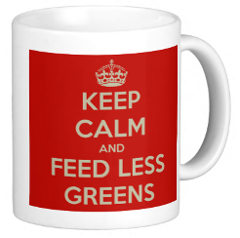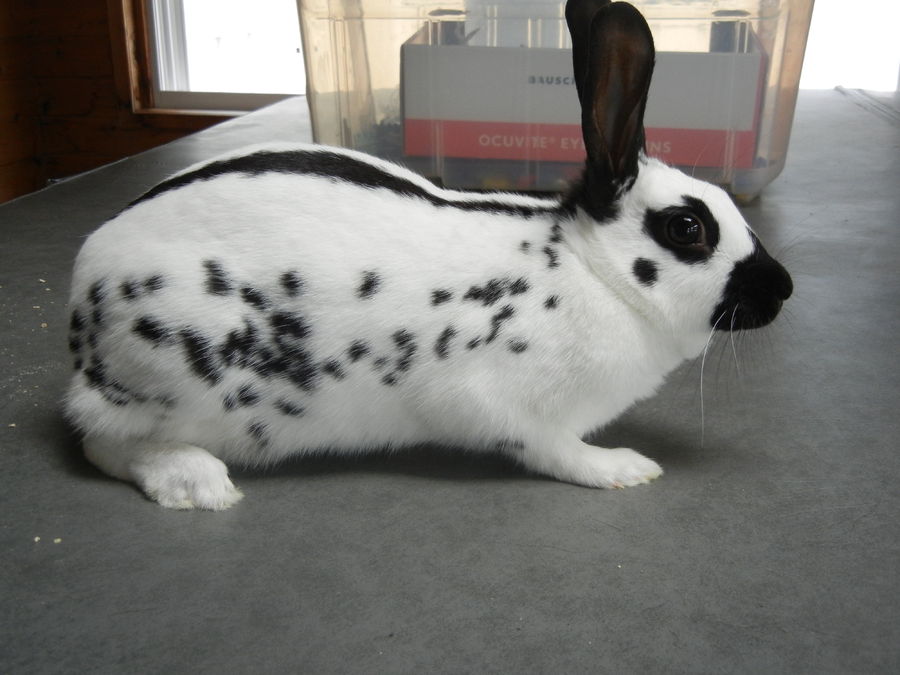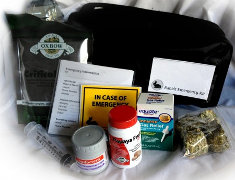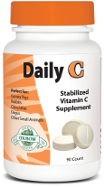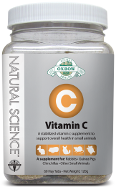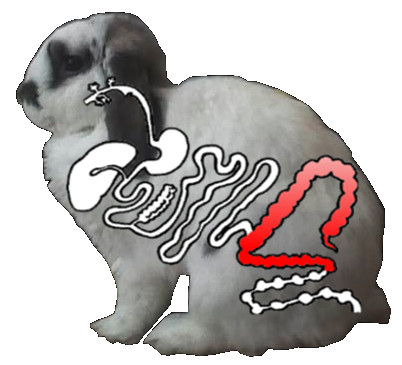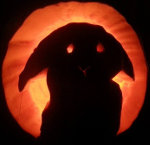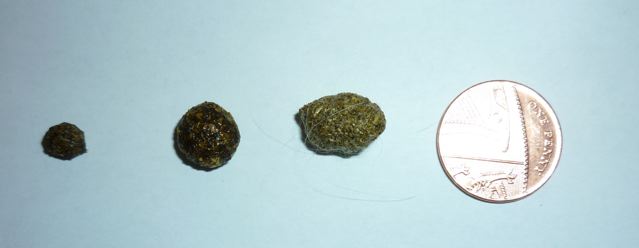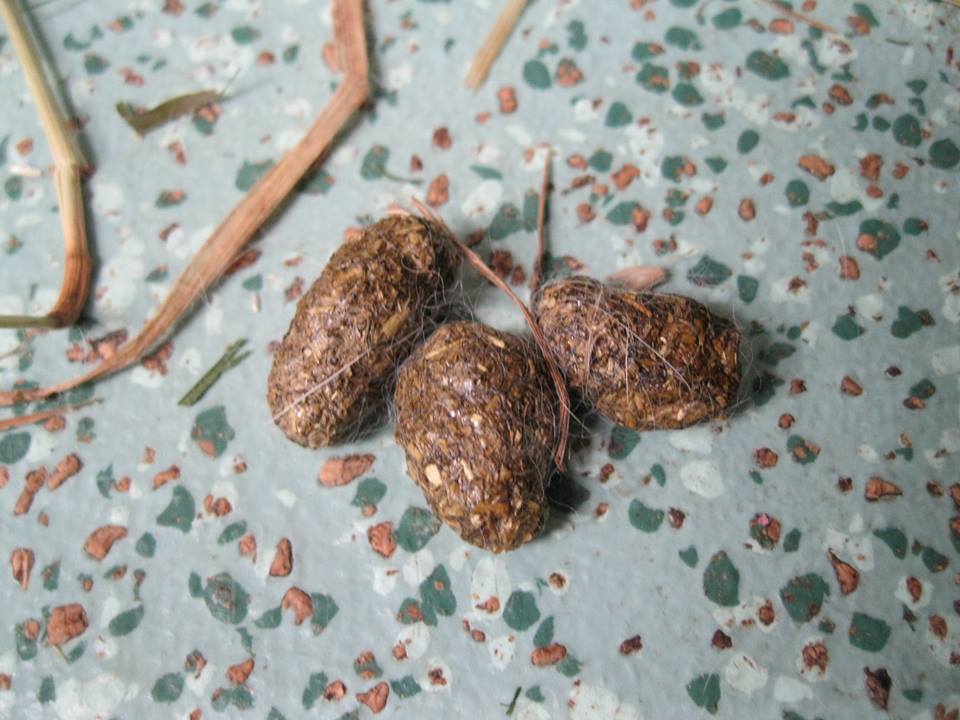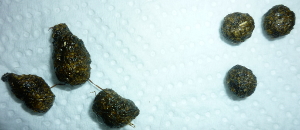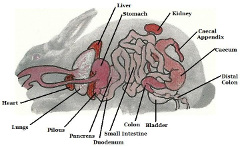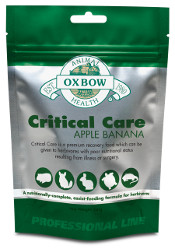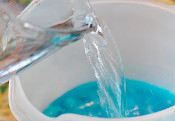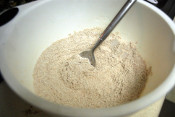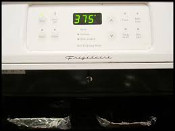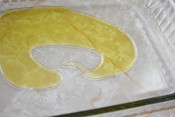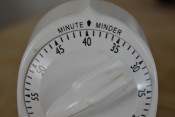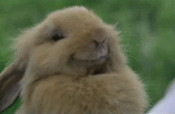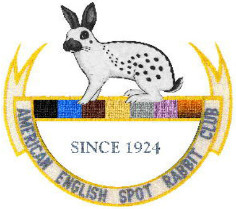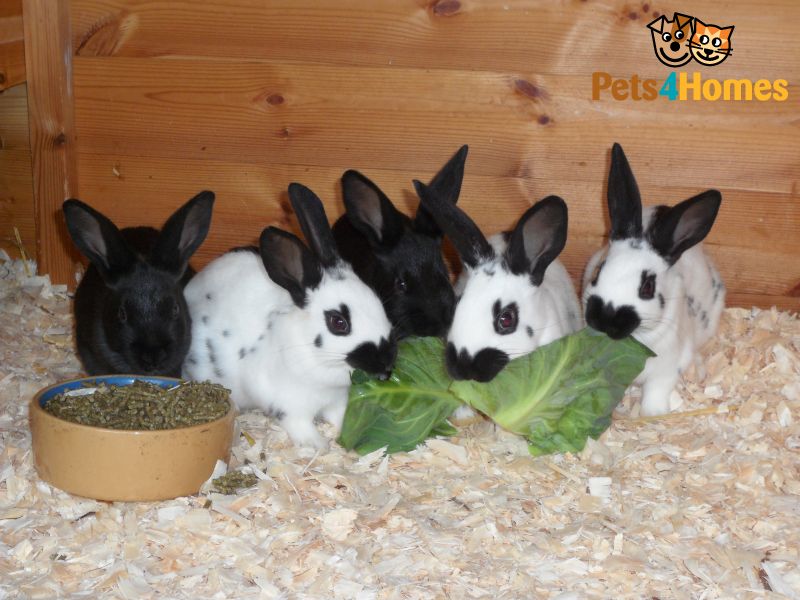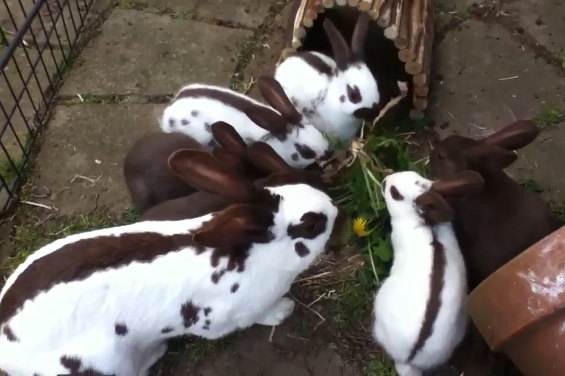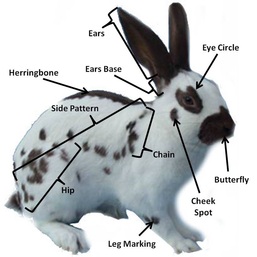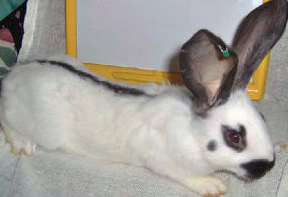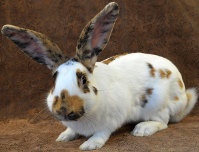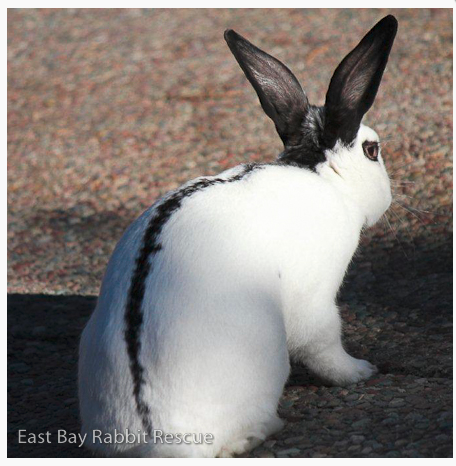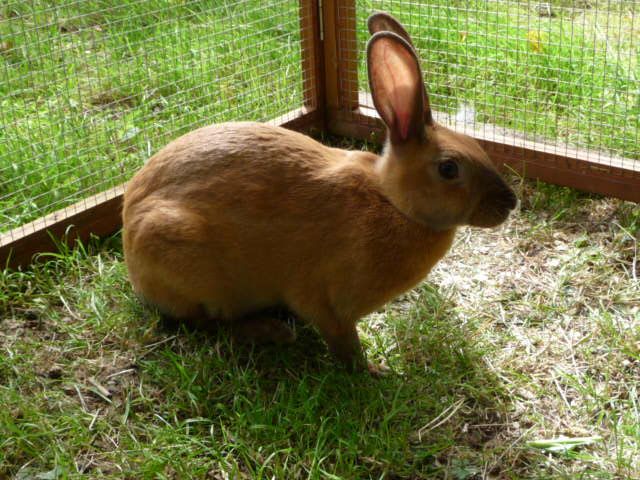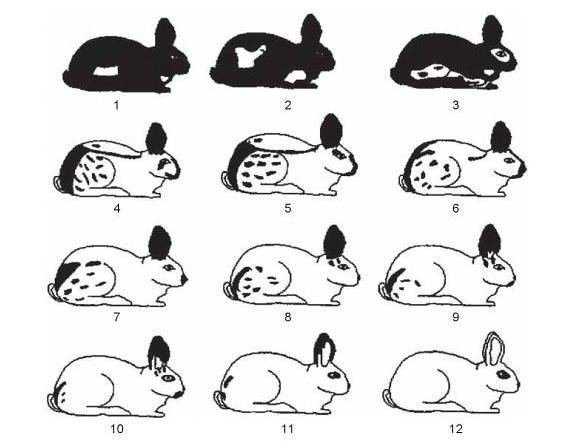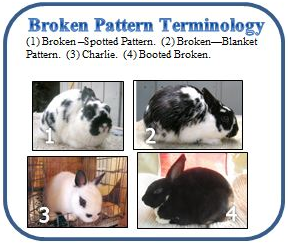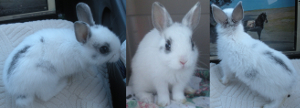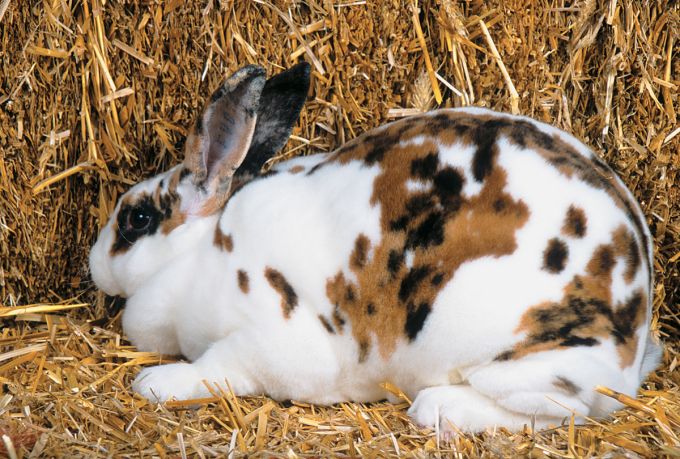

|
|
PLEASE NOTE!! The "Research Paper" section below has information and links to REAL RESEARCH PAPERS. Rabbits were breed and put down to study Megacolon and the effect the En gene has on rabbits. They may include necropsy (autopsy) pictures. The language and images may upset some!
|
- Groups:
 There is a facebook group for Megacolon Bunnies. It is a There is a facebook group for Megacolon Bunnies. It is a closed group Secret Group, you can request to join by e-mailing mossbinky@yahoo.com.
 Bunny Lovers Unite have MC information pages on Flicker: Bunny Lovers Unite have MC information pages on Flicker:
- Books:
- Medical:
- Posts:
- Megacolon Research:
 - 2014; "The KIT Gene Is Associated with the English Spotting Coat Color Locus and Congenital Megacolon in Checkered Giant Rabbits (Oryctolagus cuniculus)" - 2014; "The KIT Gene Is Associated with the English Spotting Coat Color Locus and Congenital Megacolon in Checkered Giant Rabbits (Oryctolagus cuniculus)"
Luca Fontanesi, Manuela Vargiolu, Emilio Scotti, Rocco Latorre,
Maria Simonetta Faussone Pellegrini, Maurizio Mazzoni, Martina Asti,
Roberto Chiocchetti, Giovanni Romeo, Paolo Clavenzani, Roberto De Giorgi, Published: April 15, 2014, PLoS ONE 9(4): e93750. DOI: 10.1371/journal.pone.0093750.
[Abstract]; Research paper (local copy pdf-3.1MB)
 - 2014(?); Gut flora comparison for rabbit nutrition book - 2014(?); Gut flora comparison for rabbit nutrition book
After the 2014 HRS Educational Conference (Taking Rabbit Knowledge to a Higher Level, September 27-28 hosted by the St. Louis House Rabbit Society), Christie Taylor (HRS Nationally Licensed Educator) posted about how Susan Smith, Ph.D. (helps run the Wisconsin HRS chapter), "is collecting samples from US megacolon rabbits for analysis. She's hoping to compare their gut flora to the microbes normally present in non-MC rabbits and to aid clinicians in creating therapies for MC bunns based on those results." This may be for the book on rabbit nutrition she is working on currently.
 - 1995; "A striking malformation in a spotted rabbit" - 1995; "A striking malformation in a spotted rabbit"
by Wieberneit D (1995), Published November 1st, 1993 by DTW. Deutsche tierärztliche Wochenschrift [Info]
 - 1995; "Pathophysiological and functional aspects of the megacolon-syndrome of homozygous spotted rabbits." - 1995; "Pathophysiological and functional aspects of the megacolon-syndrome of homozygous spotted rabbits."
by Böderek D, Türk O, Lovén E, Wieberneit D, Wegner W. (1995) from Institute of Animal Breeding and Genetics, Hannover School of Veterinary Science, Germany., Zentralbl Veterinarmed A. 1995 Nov;42(9):549-59. doi: 10.1111/j.1439-0442.1995.tb00410.x
[Abstract]; Research paper (local copy: PDF 4.7MB)
 - 1995; "Albino Rabbits Can Suffer From Megacolon-Syndrome When They Are Homozygous For The 'English Spot' Gene (En/En)" - 1995; "Albino Rabbits Can Suffer From Megacolon-Syndrome When They Are Homozygous For The 'English Spot' Gene (En/En)"
by Wieberneit D. and Wegner W. (1995) of the Institute of Animal Breeding and Genetics, Hannover School of Veterinary Science, Germany. Published in the World Rabbit Science 1995, 3(1), p. 19-26. doi: 10.4995/wrs.1995.236 Research paper (local copy: PDF 3.1MB)
 - The problems of spotted breeds of rabbits: - The problems of spotted breeds of rabbits:
 - 1991; "1. Fattening and body condition at slaughter, organ parameters" - 1991; "1. Fattening and body condition at slaughter, organ parameters"
by Wieberneit D, Mahdi N, Zacharias K, Wegner W. (1991) Dtsch Tierarztl Wochenschr. 1991 Sep;98(9):352-4. [Abstract]
 - 1992; "2. Further results on the variation of characteristics in fattening and breeding animals" - 1992; "2. Further results on the variation of characteristics in fattening and breeding animals"
by Mahdi N, Wieberneit D, Wegner W. (1991) Dtsch Tierarztl Wochenschr. 1992 Mar;99(3):111-3. [Abstract]
 - 1993; "3. Variability of the pigmentation grade, ganglionic intestinal wall supply, relationship to pathogenesis--animal breeding and animal welfare aspects" - 1993; "3. Variability of the pigmentation grade, ganglionic intestinal wall supply, relationship to pathogenesis--animal breeding and animal welfare aspects"
by Gerlitz S, Wessel G, Wieberneit D, Wegner W. (1993) Dtsch Tierarztl Wochenschr. 1993 Jun;100(6):237-9. [Abstract]
 - 1994; "4. Morpho- and histometric findings in the CNS and thyroid glands and the hormone content in blood at slaughter of hybrid rabbits, and estimation of the heterosis effect" - 1994; "4. Morpho- and histometric findings in the CNS and thyroid glands and the hormone content in blood at slaughter of hybrid rabbits, and estimation of the heterosis effect"
by Flemming K, Kühnel C, Wieberneit D, Wegner W. (1994) Dtsch Tierarztl Wochenschr. 1994 Nov;101(11):434-9. [Abstract]
- Ancillary Research
 - 1919; "Studies in heredity in rabbits, rats, and mice" - 1919; "Studies in heredity in rabbits, rats, and mice"
Castle WE., (1919) Carnegie institution of Washington. Publication no. 288, doi: 10.5962/bhl.title.33682 - [Paper]
 - 1924; "Linkage of Dutch, English, and Angora in Rabbits" - 1924; "Linkage of Dutch, English, and Angora in Rabbits"
Castle WE., (1924) Proceedings of the National Academy of Sciences USA, 1924 Mar;10(3):107-8., Bussey Institution, Harvard University, Boston, PMCID: PMC1085547. [Abstract; Paper]
 - 1928; "Further notes on Dutch and English rabbits" - 1928; "Further notes on Dutch and English rabbits"
R. C. Punnett F.R.S., (1928) Journal of Genetics, November 1928, Volume 20, Issue 2, pp 247-260. [Abstract -N/A; Paper]
Metacam® [meloxicam by Boehringer Ingelheim Vetmedica, Inc.]
 2014; "Molecular analysis of the microbiota in hard feces from healthy rabbits (Oryctolagus cuniculus) medicated with long term oral meloxicam." 2014; "Molecular analysis of the microbiota in hard feces from healthy rabbits (Oryctolagus cuniculus) medicated with long term oral meloxicam."
Eshar D, Weese JS. (2014) BMC Vet Res. 2014 Mar 11;10:62. doi: 10.1186/1746-6148-10-62. PMID:24618207 [Article]
 2014; "Pharmacokinetics of meloxicam administered orally to rabbits (Oryctolagus cuniculus) for 29 days." 2014; "Pharmacokinetics of meloxicam administered orally to rabbits (Oryctolagus cuniculus) for 29 days."
Delk KW, Carpenter JW, KuKanich B, Nietfeld JC, Kohles M. (2013) Am J Vet Res. 2014 Feb;75(2):195-9. doi: 10.2460/ajvr.75.2.195.PMID: 24471756 [Abstract;]
 2013; "Effects of multimodal analgesia with LowDose buprenorphine and meloxicam on fecal glucocorticoid metabolites after surgery in New Zealand white rabbits (Oryctolagus cuniculus)." 2013; "Effects of multimodal analgesia with LowDose buprenorphine and meloxicam on fecal glucocorticoid metabolites after surgery in New Zealand white rabbits (Oryctolagus cuniculus)."
Goldschlager GB, Gillespie VL, Palme R, Baxter MG. (2013) J Am Assoc Lab Anim Sci. 2013 Sep;52(5):571-6. PMID: 24041213 [Abstract;]
 2013; "Pharmacokinetics of meloxicam in rabbits after oral administration of single and multiple doses." 2013; "Pharmacokinetics of meloxicam in rabbits after oral administration of single and multiple doses."
Fredholm DV, Carpenter JW, KuKanich B, Kohles M. (2013) Am J Vet Res. 2013 Apr;74(4):636-41. doi: 10.2460/ajvr.74.4.636. PMID: 23531074 [Abstract;]
 2009; "Single and multiple-dose pharmacokinetics of meloxicam after oral administration to the rabbit (Oryctolagus cuniculus)." 2009; "Single and multiple-dose pharmacokinetics of meloxicam after oral administration to the rabbit (Oryctolagus cuniculus)."
Carpenter JW, Pollock CG, Koch DE, Hunter RP. (2009) J Zoo Wildl Med. 2009 Dec;40(4):601-6. PMID: 20063804 [Abstract;]
 2009; "Behavioural effects of ovariohysterectomy and oral administration of meloxicam in laboratory housed rabbits." 2009; "Behavioural effects of ovariohysterectomy and oral administration of meloxicam in laboratory housed rabbits."
Leach MC, Allweiler S, Richardson C, Roughan JV, Narbe R, Flecknell PA. (2009) Res Vet Sci. 2009 Oct;87(2):336-47. doi: 10.1016/j.rvsc.2009.02.001. PMCID: 19303122 [Abstract
 2009; "Comparison of Side Effects between Buprenorphine and Meloxicam Used Postoperatively in Dutch Belted Rabbits (Oryctolagus cuniculus)" 2009; "Comparison of Side Effects between Buprenorphine and Meloxicam Used Postoperatively in Dutch Belted Rabbits (Oryctolagus cuniculus)"
Coreen S Cooper, Kelly A Metcalf-Pate, Christopher E Barat, Judith A Cook, and Diana G Scorpio (2009) J Am Assoc Lab Anim Sci. May 2009; 48(3): 279-285. Published online May 2009. PMCID: PMC2696831
15141807 [Abstract; Article]
 2006; "Effect of meloxicam and butorphanol on minimum alveolar concentration of isoflurane in rabbits." 2006; "Effect of meloxicam and butorphanol on minimum alveolar concentration of isoflurane in rabbits."
Turner PV, Kerr CL, Healy AJ, Taylor WM., (2006) Am J Vet Res. 2006 May;67(5):770-4. PMID: 16649908 [Abstract;]
 2006; "Pharmacokinetics of meloxicam in rabbits after single and repeat oral dosing." 2006; "Pharmacokinetics of meloxicam in rabbits after single and repeat oral dosing."
Turner PV, Chen HC, Taylor WM., (2006) Comp Med. 2006 Feb;56(1):63-7. PMID: 16521861 [Abstract;]
 - 2003; "The effect of meloxicam and deendothelisation on vascular responses in the rabbit renal and ear arteries." - 2003; "The effect of meloxicam and deendothelisation on vascular responses in the rabbit renal and ear arteries."
Fackovcova D1, Vojtko R, Kristova V, Kurtansky A. (2004) Bratisl Lek Listy. 2004;105(1):3-7. PMID:
15141807 [Abstract; Article]
 - 2002; "The post operative analgesia (Metacam) study" - 2002; "The post operative analgesia (Metacam) study"
Study completed Summer 2002, "The Exotic Animal Service at Edinburgh Vet School ran a study into the efficacy of "Metacam" as an analgesic in rabbits. The study was designed to examine objectively the analgesic effects of "Metacam" and to determine which of two doses and which route of administration (by injection or by mouth) is most effective in controlling the pain associated with spaying/castration in rabbits. 100 pet rabbit owners in Lothian were invited to have their rabbit neutered at Edinburgh Vet School's Small Animal Hospital, at a reduced price. Although mainly funded by Boehringer (the manufacturer of Metacam), the Rabbit Welfare Fund provided a top-up grant of £500 to enable about 20 rabbits from rescue centres to be enrolled in the study complete free of charge."
[Information;]
Vitamin D
 - 2014; "Rabbits kept indoors could be vitamin D deficient" - 2014; "Rabbits kept indoors could be vitamin D deficient"
Article based on study below. ScienceDaily.com, April 9, 2014.
 - 2014; "Effects of ultraviolet radiation produced from artificial lights on serum 25-hydroxyvitamin D concentration in captive domestic rabbits (Oryctolagus cuniculi)" - 2014; "Effects of ultraviolet radiation produced from artificial lights on serum 25-hydroxyvitamin D concentration in captive domestic rabbits (Oryctolagus cuniculi)"
Jessica A. Emerson, DVM; Julia K. Whittington, DVM; Matthew C. Allender, DVM, PhD; Mark A. Mitchell, DVM, PhD, Department of Veterinary Clinical Sciences, College of Veterinary Medicine, University of Illinois, Urbana, IL 61802. (Emerson, Whittington, Mitchell); Department of Comparative Biosciences, College of Veterinary Medicine, University of Illinois, Urbana, IL 61802. (Allender). American Journal of Veterinary Research, April 2014, Vol. 75, No. 4, Pages 380-384, doi: 10.2460/ajvr.75.4.380 [Abstract; Article]
 - 1995; "The Truth About Vitamin D:
is it the answer to rabbit dental disease?" - 1995; "The Truth About Vitamin D:
is it the answer to rabbit dental disease?"
Based on a paper by Frances Harcourt-Brown, [Webpage article; dated 10/2/2012]
 - 1995; "A review of clinical conditions in pet rabbits associated with their teeth" - 1995; "A review of clinical conditions in pet rabbits associated with their teeth"
FM Harcourt-Brown,
Veterinary Record 1995;137:341-346 doi:10.1136/vr.137.14.341 [Abstract]
- "very neat view of the inside of a rabbits mouth" - teeth
Bloat (Acute Gastrointestinal Dilation - distended stomach / gas - Gastric Dilatation-Volvulus (GDV))
- Study by B. Schuhmann, Dr. med. vet.1 and I. Cope, BSc(VetSci)Hons CertAVP(ZooMed) BVM&S MRCVS: "Medical treatment of 145 cases of gastric dilatation in rabbits" (2014)
- Study by F. M. Harcourt-Brown, BVSc, FRCVS: "Gastric dilation and intestinal obstruction in 76 rabbits" (2007)
- Wildpro, Acute Gastro-Intestinal Obstruction in Rabbits
- MediRabbit Carmela: acute bloat in a 3 years old rabbit"
- CASE STUDY: BLOAT by Linda Seeman, MSN
- MediRabbit GRAPHIC PICTURES! Acute onset of bloat can affect any rabbit
- Georgia House Rabbit Society The Rabbit Digestive System
- Rabbit Bloat Information by Jo Hinde posted on the FB group "House Rabbit Society." [local copy]
- Bloat in Rabbits by L. Seeman, MSN (January 2004) @ Bunny Lu
- What causes bloat in rabbits? by
Rin Tsukiyori Care of Rabbits Supervisor @ answers.com
- Hairballs & GI Stasis by Teresa Wood-Mazotti posted on the FB group "Companion Rabbit Chat."
- Wildpro, Acute Gastro-Intestinal Obstruction in Rabbits
- Bunny Lu, L. Seeman, MSN, Bloat in Rabbits
- Bunnies in Need, Bloat ~ What It Is
- RabbitsOnline, Bloat/Gas
- MEKARN Workshop 2008: Organic rabbit production from forages, R A Leng, Digestion in the rabbit –a new look at the effects of their feeding and digestive strategies
GI Stasis
[Overview |
English Spot Breed |
En/en Genes |
MC/CPS Background |
Care |
Reference & Research |
What is Megacolon?]
|
|
